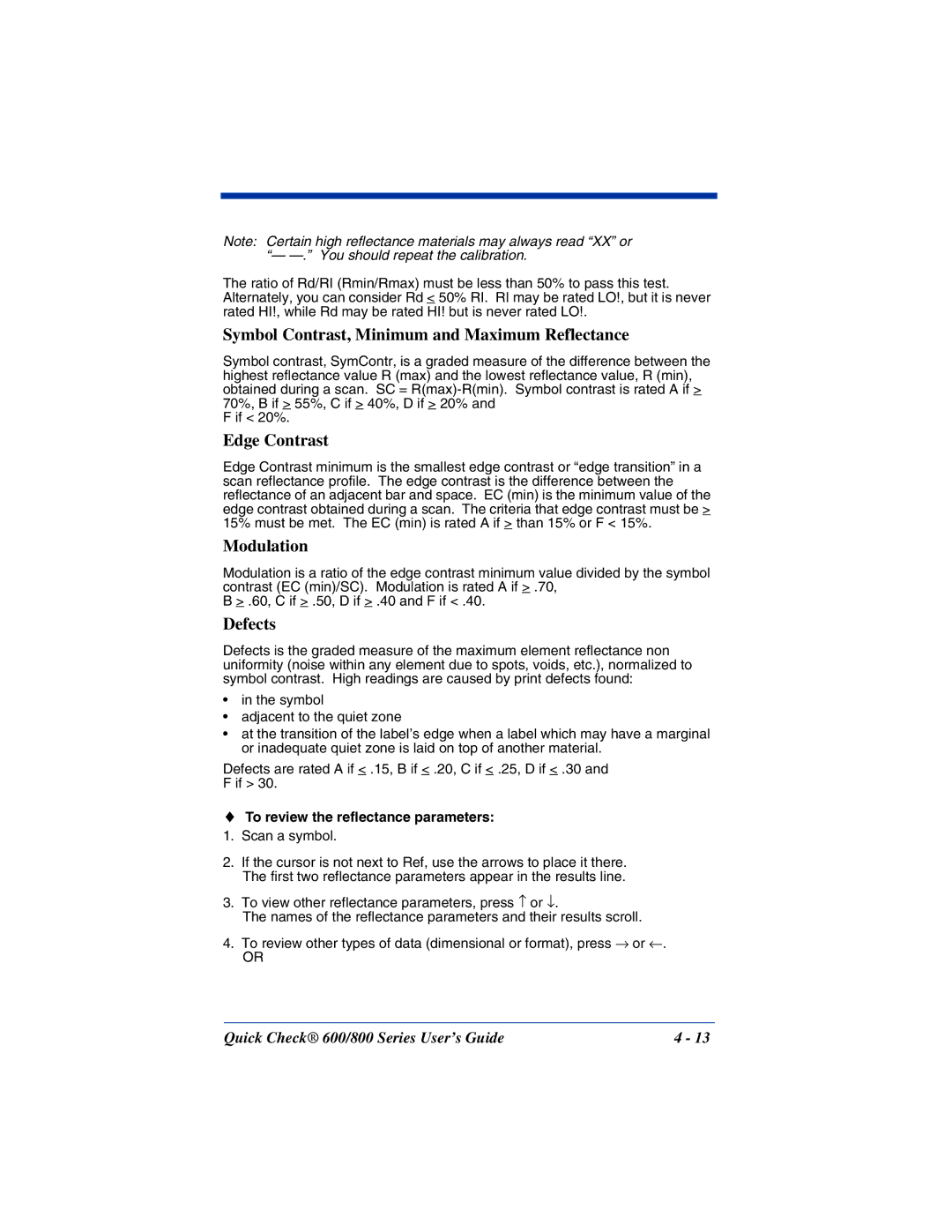
Note: Certain high reflectance materials may always read “XX” or “—
The ratio of Rd/RI (Rmin/Rmax) must be less than 50% to pass this test. Alternately, you can consider Rd < 50% RI. RI may be rated LO!, but it is never rated HI!, while Rd may be rated HI! but is never rated LO!.
Symbol Contrast, Minimum and Maximum Reflectance
Symbol contrast, SymContr, is a graded measure of the difference between the highest reflectance value R (max) and the lowest reflectance value, R (min), obtained during a scan. SC =
F if < 20%.
Edge Contrast
Edge Contrast minimum is the smallest edge contrast or “edge transition” in a scan reflectance profile. The edge contrast is the difference between the reflectance of an adjacent bar and space. EC (min) is the minimum value of the edge contrast obtained during a scan. The criteria that edge contrast must be > 15% must be met. The EC (min) is rated A if > than 15% or F < 15%.
Modulation
Modulation is a ratio of the edge contrast minimum value divided by the symbol contrast (EC (min)/SC). Modulation is rated A if > .70,
B > .60, C if > .50, D if > .40 and F if < .40.
Defects
Defects is the graded measure of the maximum element reflectance non uniformity (noise within any element due to spots, voids, etc.), normalized to symbol contrast. High readings are caused by print defects found:
•in the symbol
•adjacent to the quiet zone
•at the transition of the label’s edge when a label which may have a marginal or inadequate quiet zone is laid on top of another material.
Defects are rated A if < .15, B if < .20, C if < .25, D if < .30 and F if > 30.
♦To review the reflectance parameters:
1. Scan a symbol.
2.If the cursor is not next to Ref, use the arrows to place it there. The first two reflectance parameters appear in the results line.
3.To view other reflectance parameters, press ↑ or ↓.
The names of the reflectance parameters and their results scroll.
4.To review other types of data (dimensional or format), press → or ←.
OR
Quick Check® 600/800 Series User’s Guide | 4 - 13 |
